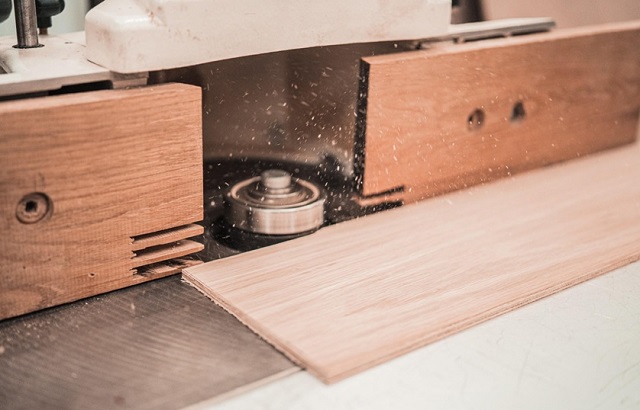Wood is used in our day to day life in various forms. For construction purposes, wood is even engineered in the market like particleboard, hardboard, plywood, blockboard, etc. Among these, plywood and blockboard are used for making furniture or home decor purposes.
Both plywood and blockboard are different from each other, each of them with its own set of unique properties. Many manufacturers and vendors though recommend both of these materials for all purposes leaving the customers confused as to which material should be used in different situations. If you are wondering about how to choose the right plywood, distinguish between plywood grades in India.
The primary difference between plywood and blockboard is in how they are engineered. Plywood is made by thin panels or layers of wood veneer glued together adjacently, which are further pressed together under high temperatures to form sheets. Blockboard has a softwood strips core which is placed edge to edge enclosed between hardwood veneer sheets. These are then pressed together under high pressure and temperature.
Here are a few key differences between Plywood and Blockboard:
Plywood:
- Plywood is not prone to water damage. Especially variants like laminated marine plywood and boiling waterproof plywood.
- The difference between 303 and 710-grade plywood is that IS 303-grade plywood is BWR grade (Boiling water resistant) while IS 710 plywood is Marine plywood which has higher water resistance and is stronger.
- Long sheets of plywood are malleable in the centre.
- Plywood can be averse to cracking and warping.
- While working with it, plywood is prone to splitting.
- Plywood is uniformly built.
- Its core is made of hardwood veneer which is quite dense, making it heavier than blockboard.
- It can be difficult to cut compared to a blockboard.
- It is very durable because of its cross laminated structure.
- Screws and nails can be easily fixed on plywood.
- It can offer a very long lifespan when coated with lacquer. More so if it is used in a dry environment.
- It is expensive.
- It is mostly used to build customizable furniture. It can also be used as panels, floors, walls, and roofs while construction.
- Plywood has different grades, all of them serve their unique purpose.
Blockboard:
- Because it retains moisture, blockboards can be damaged by water.
- It does not sag or bend. If the required length of furniture is more than 6 feet, blockboards are used.
- It is very stable and is not prone to cracking or warping.
- Since a blockboard does not split upon cutting, it gives a wavy look.
- Even though it can be hard to see from outside, there are tiny gaps between the blocks of blockboard.
- It is lighter in weight because of its softwood core.
- It can easily cut using regular tools.
- Blockboard can hold screws and nails very well, however because of the gaps in it, nails have a chance of falling into them. Fixing them requires skilled workers.
- Blockboard, when compared to other engineered wooden products, offers an extensive lifespan, but not more than plywood.
- Blockboard is less expensive than plywood.
- Because of its softwood core, the blockboard is not as strong as plywood. Its strength can be increased if its core contains hardwood strips.
- Blockboard is mostly preferred when long pieces of wood are required for manufacturing furniture.
- Because of its lightweight, it is easily transferred and installed.
Plywood and blockboard are both sold in panels and are readily available in stores. Either one of them is a good choice for interior decorating or manufacturing furniture. Plywood has different grades suited for different uses. It is mostly used to manufacture interior furniture like cabinets, TV units, wardrobes, etc. Plywood can withstand water, it is advisable to go for marine plywood for areas like bathrooms, kitchen, etc where there is a high likelihood of water usage.
Blockboard is less likely to bend and is stiffer in comparison to plywood. It is generally used to make long pieces of furniture like long bookshelves, tables, benches, etc. Because of its lightweight aspect, a blockboard is preferred as it can be easily moved. It is used a lot in building doors for interior and exterior use.
Plywood should be cleaned with a dry dusting cloth and any spills that may occur should be immediately cleaned. Blockboards should also be cleaned with a dry cloth and it should not be wiped with a wet mop. This wood should be away from water.
Also Read:
As mentioned earlier, manufacturers and vendors mix these products up and hence there is confusion between these two wooden boards. Consulting a professional can be helpful as they are knowledgeable about the various kinds of wood available and how and where they should be used.

